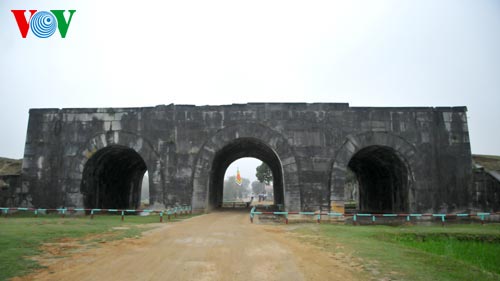
The United Nations Educational, Scientific and Cultural Organisation (UNESCO) on June 16 presented a certificate to Vietnam, officially recognising the Ho Dynasty Citadel as the World Cultural Heritage.
The United Nations Educational, Scientific and Cultural Organisation (UNESCO) on June 16 presented a certificate to Vietnam, officially recognising the Ho Dynasty Citadel as the World Cultural Heritage.
Eric Falt, UNESCO Assistance Director General for External Affairs and Public Information, delivered the honour to representatives of the Vietnam National Commission for UNESCO and Thanh Hoa province, where the 14th century citadel is located.
 |
The citadel, also known as the Tay Do, An Ton, Tay Kinh or Tay Giai citadels, was Vietnam’s former capital under the Ho Dynasty from 1400 to 1407.
Built in 1397 on an area of about 150ha, the structure was supervised by Ho Qui Ly, a top Tran Dynasty mandarin, who later took the throne in 1400 and moved the capital from Thang Long (the former name of Hanoi today) to the citadel.
The stone structure, one of very few fortresses of its kind in the world, has four arched gates facing north, south, east and west. Despite the passage of time, the four gates remain intact.
 |
|
Built of large blocks of stone in the 14th century, part of the the citadel remains intact |
It was recognised by UNESCO as the World Cultural Heritage on June 27, 2011. According to the UN organisation, the citadel buildings "represent an outstanding example of a new style of Southeast Asian imperial city".
Addressing the ceremony, National Assembly Chairman Nguyen Sinh Hung congratulated Thanh Hoa province on having an ancient architectural work honoured globally.
“The Ho Dynasty Citadel, together with other world tangible and intangible heritages, will enrich the thousand-year-old civilisation of the Vietnamese nation, helping international friends further understand Vietnam and its people, and opening up new opportunities for tourism development and cultural research in the country,” said Hung.
He said that the recognition requires Vietnam to conserve and promote cultural values of the citadel and other heritage sites in line with the Vietnam Heritage Law and the UN Convention Concerning the Protection of the World Cultural and Natural Heritage.
 |
|
The citadel will become one of an ideal tourist attractions in Thanh Hoa |
Thanh Hoa province, about 150km south of Hanoi, plans to pour more than US$1 million into the restoration of the citadel to make it an attractive destination for domestic and foreign holiday-makers.
It will launch two special tours of the citadel to introduce heritage tourism potential in the province.
Apart from the Ho Dynasty Citadel, Vietnam has six other natural and cultural heritages recognised by UNESCO: the former imperial capital of Hue, Ha Long Bay, Hoi An Ancient Town, My Son Sanctuary, Phong Nha-Ke Bang National Park, and Thang Long royal citadel in Hanoi.
(Source: VOV)




